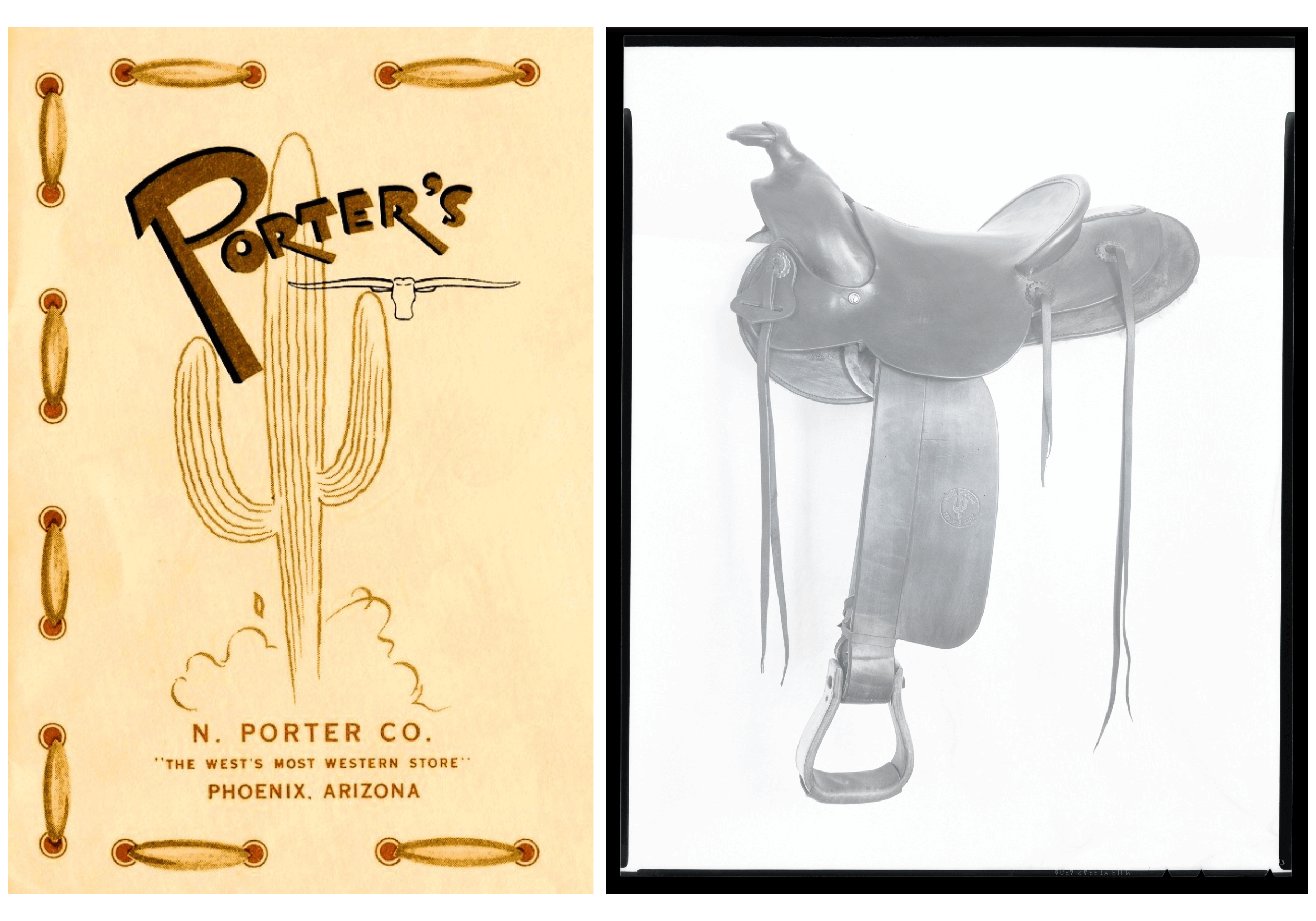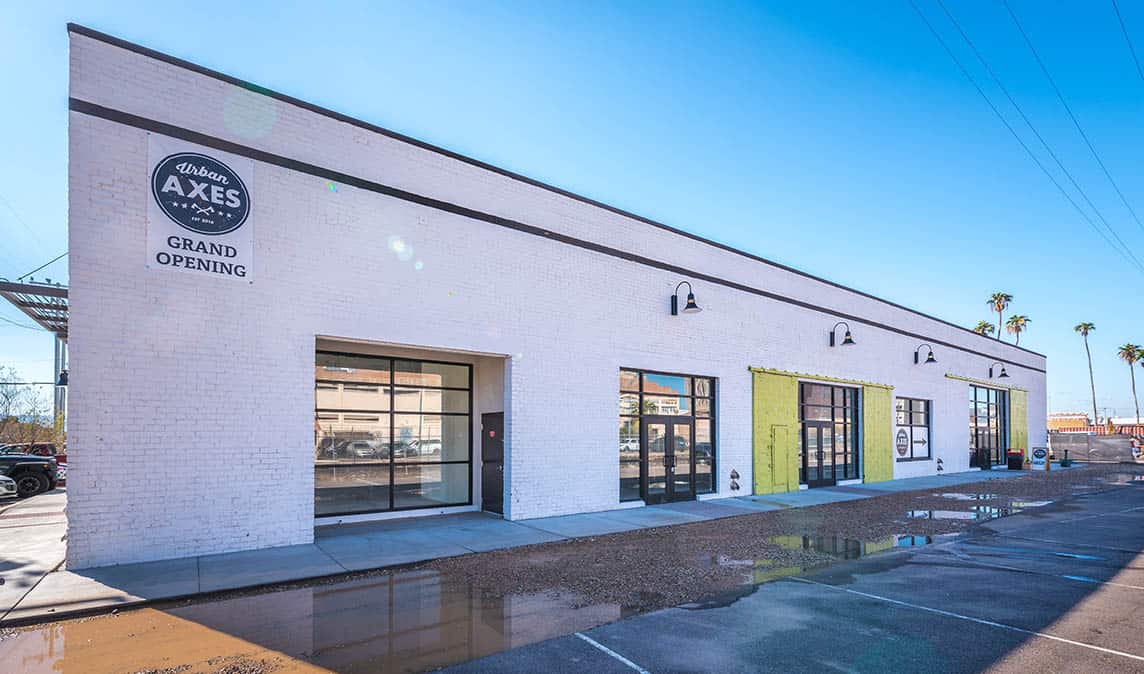To “saddle up” in Downtown Phoenix these days likely means swiping an app to unleash a lime-green Grid Bike Share. But the term had a different meaning when the N. Porter Saddle & Harness Company was in business from 1895 to the mid-1960s. The Downtown shop offered many goods, including handcrafted saddles with an international reputation.
Porter’s “The West’s Most Western Store” was founded in Texas in 1875 and relocated to Phoenix in 1891. By 1940, the business was located at the northwest corner of First and Adams streets and featured Western wear and outdoor equipment on the first floor and basement, while the second floor had a leather shop.
“The N. Porter Company gives each of its saddles an individual number and keeps a permanent record of each saddle by that number,” said 25-year-employee Walter King to The Arizona Republic in 1940. “At present, we have in our files complete descriptions of more than 14,000 saddles that we have made.”

(Left) Porter’s logo. (Photo: Arizona Memory Project) (Right) Porter’s handcrafted saddle. (Photo: McCulloch Bros)
After World War II, demand for saddles increased. Porter’s opened a separate saddle shop at 406 South First Street in the warehouse district in a building adjacent to the Southern Pacific railroad tracks. “I recall when a truck would deliver a huge stack of tanned leather hides to the shop that was so aromatic,” says Tony Kulina, who worked there as a 19-year-old in 1949. “You never forget that smell.”
The shop employed a half-dozen saddle makers, primarily men who learned the craft from their fathers, usually in Mexico. “I was fascinated by the skill of the shop foreman as he expertly sliced the leather hides into rough shapes for the saddle makers to use,” Kulina says. “It was like a miracle to see a saddle take shape day by day as they built it, following strict measurements provided by the buyer. Then to see the finished product expertly dyed and polished to a shiny finish.”
Kulina says that the saddles, belts, and other pieces were works of art. “There were about six different floral patterns that a buyer could choose from, and the toolers also decorated the tack and harness parts,” he says.

Urban Axes, 2018. (Photo: Empire Group)
The saddle shop was close to the bus depot, which brought in occasional visitors such as Phoenix native George Sparling when he was an adolescent. “I used to go in and watch the saddle maker at his trade while waiting for the bus to go home,” he says. “What a skill to make those beautiful saddles all by hand.”
Porter’s donated ornate saddles as prizes to rodeo competitions nationwide, many with sterling silver ornamentations. “Porter saddles were known for their craftsmanship, sturdiness, and long life,” Kulina adds. “I think you can still find many of their saddles in use today.”
That’s an impressive statement, as Porter’s declared bankruptcy in 1962, and the saddle shop closed a few years later after briefly relocating to 6048 North 16th Street. There, in a strange commercial tandem, Porter’s shared a storefront with Tang Pharmacy, where equestrians could, in one stop, pick up a saddle and aspirin for their horse-induced aches and pains.
The former Porter’s saddle shop building survives and most recently housed the now-closed Urban Axes.
Douglas C. Towne is the editor of Arizona Contractor & Community magazine, www.arizcc.com



